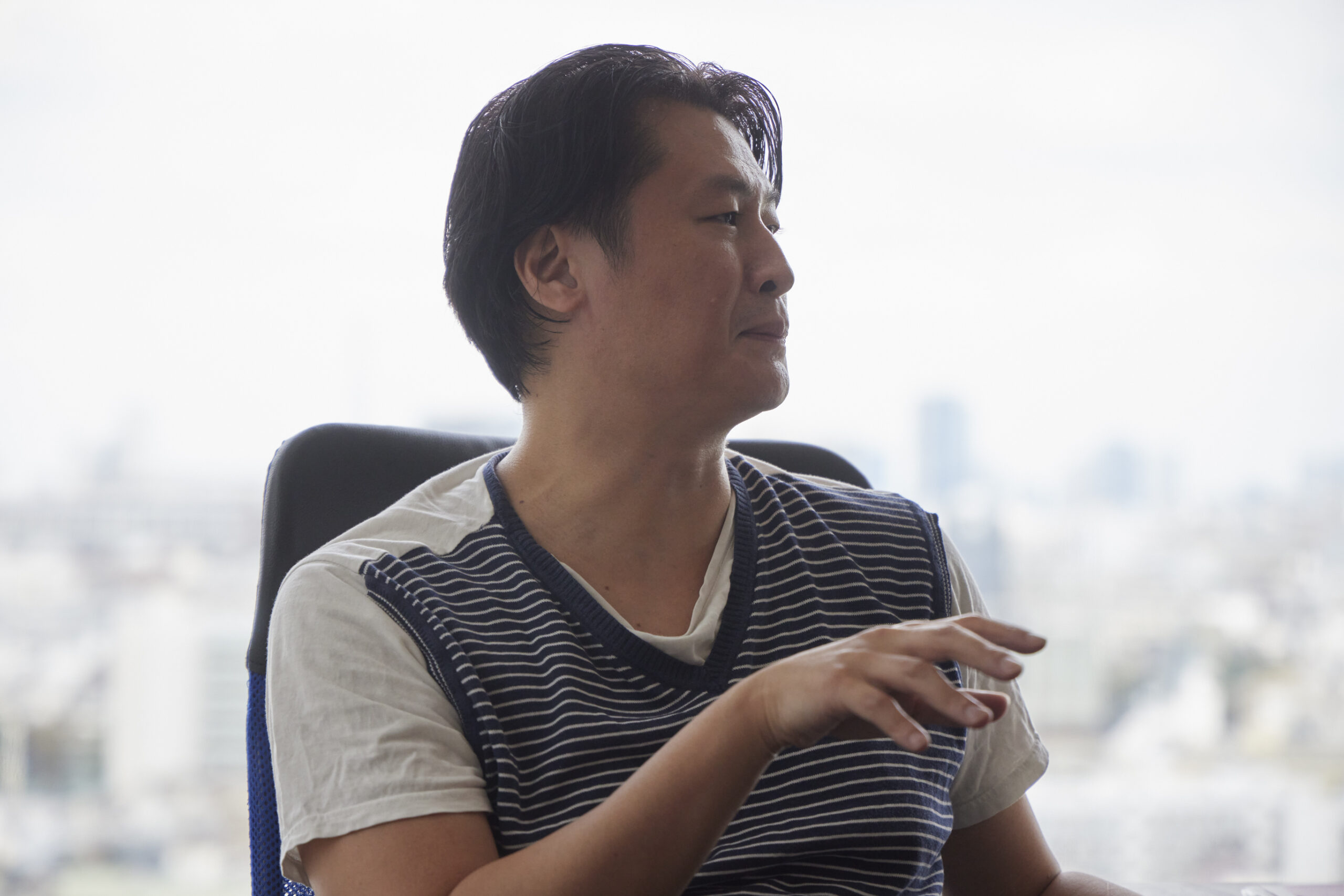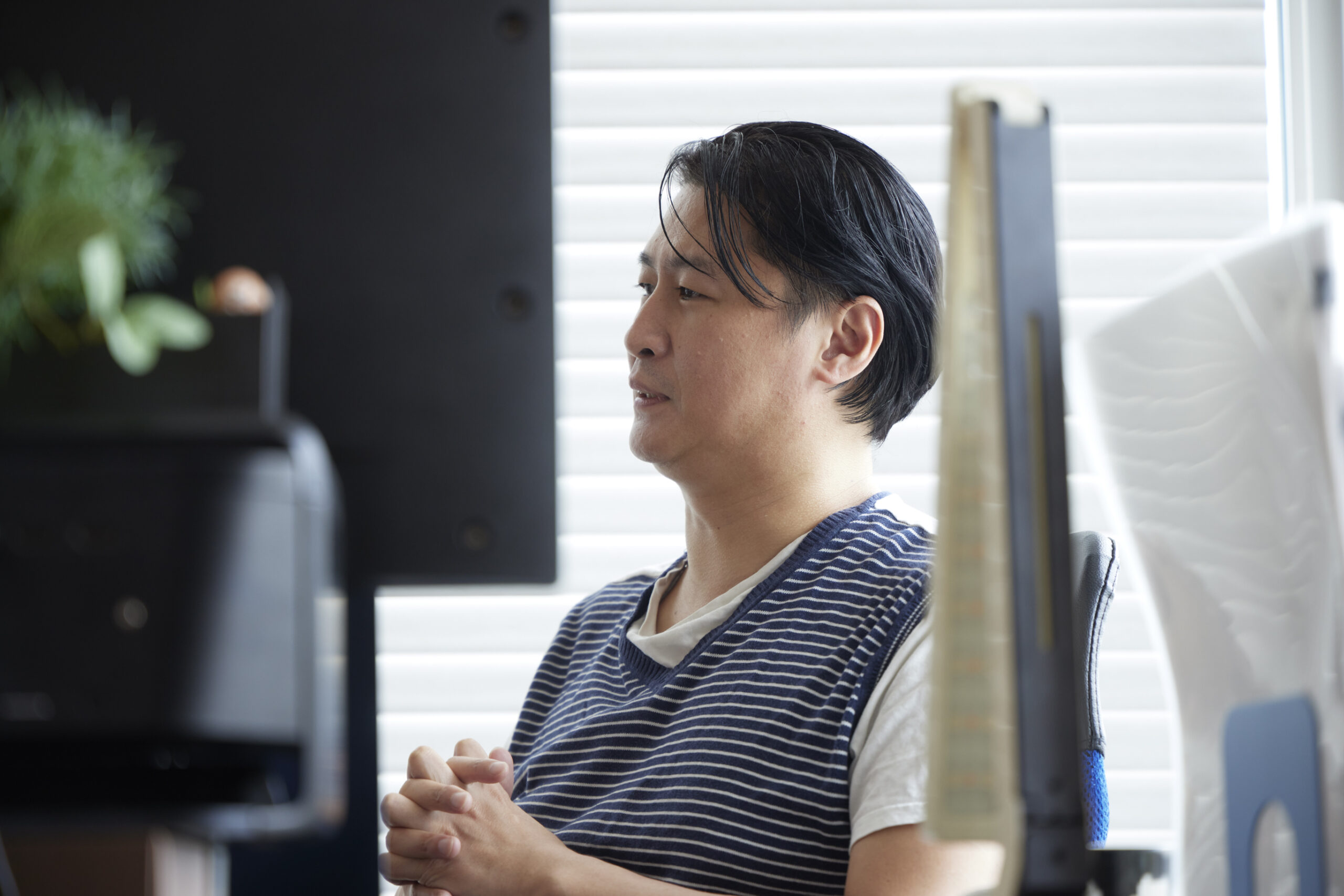
The Questions of “Ghost in the Shell” as Presented by Tow Ubukata: Behind the scenes stories of the origins of “Ghost in the Shell: Arise” and the future of the series #01
Text: Miho Otobe / Photo: Eiji HikosakaThe miniseries Ghost in the Shell: Arise (2013-2014) took on a new challenge with a serial structure utilizing four directors for separate theatrical releases. Meanwhile, one man, Tow Ubukata, worked on the scripts for all of these works. Ubukata has been a series fan since the release of the first manga. While working as a writer on Arise, the internet had reached ubiquity in modern society, leaving a distinct set of struggles in depicting a future society. In this interview, we asked about that, as well as his efforts to preserve the Ghost in the Shell series for future generations and the future he envisioned for it.
#01 Using the Original "Ghost in the Shell" Manga as a Textbook
―When did you first encounter Ghost in the Shell?
Tow Ubukata(“Ubukata”) The first time was when I read the original manga in my teens. I’ve always liked Masamune Shirow’s works, and I have loved Appleseed and Dominion. When Ghost in the Shell was announced, I felt it was Shirow’s best work yet. I couldn’t put it down once I started. It was the first work I had seen that blended elements like cyberpunk, military, and detective fiction and had very detailed setting and story elements despite the limited page count. I was surprised at how dense it was.Although I had made my debut as a writer by that point, I was still a student, too. I read all sorts of manga to study and admired Shirow’s works as the type of story I wanted to write. I remember reading through Ghost in the Shell several times. To me, the original manga really took the place of a textbook.

―So when the anime adaptation of the same title by Oshii came out, did you rush to the theater to see it?
Ubukata: I had also loved Oshii’s settings from earlier experiences and was a big fan of the Mobile Police Patlabor series and Angel’s Egg. And Oshii, a director I love, was working on Ghost in the Shell! So I was really excited about it. I kept going back to the theater, time after time.All the other animation I had seen up until then had a sort of promise it made viewers, where characters developed according to a specific principle. This was different. It opens with the heroine committing an assassination out of nowhere, and she defines life in a way that’s incomprehensible to people now. And despite that, she also isn’t confident about whether she’s human herself. That felt unique to me, too.
The “white space” was another thing that captivated me in the film Ghost in the Shell. CG wasn’t widely available as part of anime production at the time, so there were limits to what they could do. I think that ended up making it more of a stoic film in the end, though. They took what they could and cut what they had to completely, leaving a lot of white space for the viewer to imagine for themselves. That was innovative, and I feel like it shaped the direction of the subsequent Ghost in the Shell series as a sort of guiding principle.
―So I hear that you accepted without hesitation when they made the offer for you to write the script for Ghost in the Shell: Arise?
Ubukata: That’s right. I actually reject a lot of offers to adapt original manga. Sometimes I feel like I’m not suited to it, and sometimes I want to write my own original stories instead.But I didn’t even think about rejecting Ghost in the Shell. I learned a lot from the series as a writer, so I had a debt to repay. And I also wanted to play a role in passing the baton on to the next generation.

―Ghost in the Shell: Arise is a prequel to the formation of Public Security Section 9. How did that idea take form?
Ubukata: Well, really, it was a struggle to get there. *Laughter* Everyone on the team had their own strong opinion on what Ghost in the Shell was, and they were all different, so it took several months to get everyone on the same page in terms of ideas. And what we found was that we had to depict the past to satisfy everyone. Shirow had just sent us setting information for the characters’ pasts at the time, so it seemed right. I said we had to focus on the past if this was what Shirow was talking about, and I talked everyone into it. *Laughter*
―Ghost in the Shell: Arise is serial in structure, with four episodes and separate directors for each. Did the series structure have any surprises for you? Or did you talk with director Kazuchika Kise about anything in particular with it?
Ubukata: Having each director focus on their own portion means that they don’t consider the connections with other episodes at all. *Laughter* So if we didn’t present a strong, easily followed concept, the work as a whole would end up disjointed. So I spoke with Kise and settled on concepts like Motoko in a cute light we’ve never seen before, Batou as a sort of sad figure, and Aramaki being cool. Making Aramaki look cooler and younger helped it make sense for Motoko to listen to him, as inexperienced as she is. And making Batou come off sadder makes it clearer why he follows along after Motoko.I asked each director what they wanted to cover and emphasized that we’d incorporate what they wanted, so we needed them to portray the characters consistently to avoid a disjointed sense when watching the full series.

―What prompted you to introduce the concept of the mysterious “Fire Starter” virus that implants false memories in the story of Ghost in the Shell: Arise?
Ubukata: We had to give them shared keywords to give the overall series a sense of connection while also respecting their visions as directors. We went with the idea of technology for altering memories as a new concept that felt fresh, but it involves programs you can’t see, which made it hard to show visually. As a result, we ended up showing something like a virus wriggling its way into someone even if you couldn’t see it visually, rather than an exaggerated CG program startup.
Continued to #02 The Significance of a Romantic Depiction of Motoko
TOW UBUKATA
Born in Gifu Prefecture in 1977. He made his authorial debut as a student at Waseda University in 1996. He won the Eiji Yoshikawa Prize for New Writers, the Honya Taisho Booksellers’ Award, and more for Tenchi: The Samurai Astronomer. Nominated for the Naoki Sanjugo Prize for the same title, as well as works including 12 Suicidal Teens and Koppai. He is also an active anime series showrunner and scriptwriter, with credits including the Fafner in the Azure and Psycho-Pass series.

